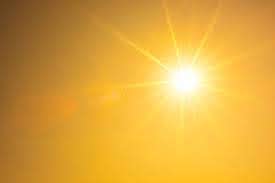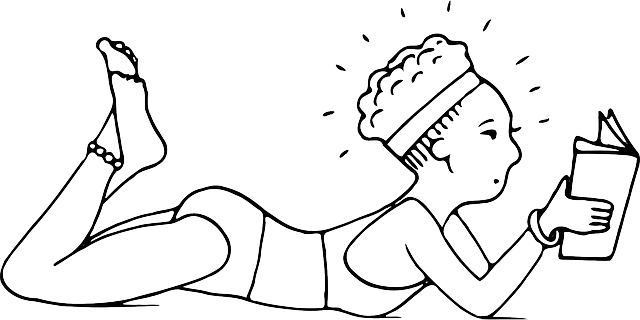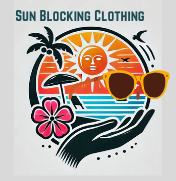
DIY Sunscreen?
DIY Sunscreen or commercial? A recipe so you could make your own sunscreen protection at home?
Can you even make a working Sunscreen at home? Making a good working sunscreen may not be a practical idea for you unless you are really allergic to the commercial ones sold. There are many different answers. Read further to know it if is something you should do.
How about this one? It seems pretty much like the rest I found. This one has the ingredients to protect your skin and kind of easy to make. If a DIY Sunscreen is what had in mind, consider these ideas.
DIY Sunscreen With Aloe Vera And Coconut Oil
- 1/4 Cup Coconut Oil (has an SPF of 7 by itself)
- 25 drops Walnut Extract Oil for scent and an added SPF boost.
- 1 cup (or less) Shea Butter for a spreadable consistency.
(Be sure and check the instructions in the next paragrph)
- 2 (or more) Tbsp. Powdered Zinc Oxide.
- 1/4 Cup Pure Aloe Vera Gel ( 50 % or higher pure Aloe)
Instructions
- Combine ingredients, except the Zinc Oxide and Aloe]Vera Gel, in a medium saucepan. Melt the Shea Butter and Oils together using medium heat.
- Allow to cool for several minutes before stirring in Aloe Vera Gel.
- Cool mixture completely before adding the Zinc Oxide. Mix well to make sure the Zinc Oxide is distributed throughout.
- Option; You may add some Beeswax or another waxy substance for a stickier consistency. The mixture is thin at this point, but able to help protect your skin from sunburn.
Store in a glass jar, and keep in a cool, dry place until you’re ready to use.
All these ingredients are available on line. Shipped to your doors step.
DYI Spray On Sunscreen
For your homemade sunscreen spray, combine the ingredients as directed in recipe and instructions above, just leave out the Shea Butter.
After the mixture cools completely, add a bit more Aloe Vera Gel and a carrier oil such as Almond Oil, which has SPF properties of its own. Slowly add carrier oil mixing well after each addition, until the mixture is a sprayable consistency.
Store in a glass spray bottle and keep refrigerated for best results.
You will be able to find Almond Oil and a glass spray bottle, easily online.
Homemade Sunscreen For Oily Skin
When you have oily skin, you may be hesitant to apply a DIY sunscreen that’s heavy on oil ingredients. Don’t turn away from an oil based sunscreen. Some essential oils can actually correct overproduction of sebum (oil) on your skin.
If you have some concern about oil buildup on your skin, follow the recipe above. Just swap out Coconut Oil that can clog pores for Sweet Almond Oil which is noncomedogenic. And there is always Jojoba Oil for non clogging oils.
Again, easy to find online.
DIY Waterproof Sunscreen
While some recipes may claim to be waterproof, there’s really no science to back up the idea of a homemade waterproof sunscreen. I could not recommend them here.
How Important Is Sunscreen?
Even though I am on a mission to help people become aware of how much skin protection you get when wearing sun blocking clothing, sunscreen is still important in your overall protection plan. Why We Need Sunscreen
Using sun blocking clothing to protect your skin from the sun is easier than relying on sunscreen alone. Your need to reapply often is usually how you get burned, your sunscreen wears off and is not replaced.
Sunscreen Is Important
Why are people are asking about a way to make their own sunscreen?
One reason is because of some of the ingredients in our popular commercial sunscreens have been shown to contribute to the chances for cancer or other issues
This is not enough reason to make you skip your sunscreen step of skin protection from the sun.
I have found a ton of researchTrusted Source to show that sunscreen reduces your risk of sunburn, which in turn lowers your risk that can lead to melanoma.
You must use common sense about the limits of what sunscreen can do. Even water-resistant sunscreen nust be reapplied every two hours for best results. You can not trust sunscreens alone. You have to behave in a sun safe manner.
Taking breaks in the shade, wearing your sun-protective clothing and a hat, and your sunglasses. You should also limit your total sun exposure time. These practices must be additional parts of your sun protection plan.
Sami’s Takeaway

The truth is, there’s not much information out there supporting the idea of homemade sunscreen. This is not to say you can’t make your own, but when I totaled the cost, I don’t think I will be right now.
Things change and there may be some reciepes I don’t know about at some point.
Even with a chemistry degree or pharmaceutical background, it’s difficult for anyone to figure out how much zinc oxide or titanium dioxide a sunscreen recipe needs to have for enough sun protection.
It takes entire teams of chemists years or even decades to tweak and perfect sunscreen products formulas. Then the FDA has their testing to make products safe and acceptable.
The chances of you being able to perfect a safe and effective sunscreen that will compare with the products on the market are slim.
The good news is that you don’t have to settle for the bad stuff, even if you can’t DIY sunscreen.
Plenty of sunscreens that don’t contain the troubling ingredient oxybenzone are available. (This is the chemical which can alter human reproductive hormones. This also one of the chemicals that is causing damage to coral reefs.)
With a proactive, educated consumer base we expect better sunscreen options to hit shelves in the summers to come.
Basics For An Effective Sunscreen
For me, sunscreen is one of those products that feels like it should come with its own dictionary for understanding the label.
To understand what makes a sunscreen work, let’s break down some of the terms used to tell us about the product.
SPF Level
SPF is telling you the “sun protection factor.” It’s a numerical estimate of how well a product will protect your skin.
You will need protection from ultraviolet B (UVB) rays when you are having fun in the sun. That is why using a number will help you understand the SPF.
The American Academy of Dermatologists is suggesting the that you use an SPF of 30 at the very least.
Broad Spectrum
Properly applying a broad-spectrum sunscreens will help protect your skin from the sun’s UVB rays including the ultraviolet A (UVA) rays.
UVB rays are more likely a cause of skin cancer. UVA rays can still cause skin damage by penetrating deep into your skin’s layers to accelerate wrinkles.
That’s why a broad-spectrum sunscreen protects you better from the sun.
Sunblock Or Sunscreen
Sunblock is a term we use to describe products that protect from UV rays by remaining on top of your skin, instead of absorbing into your skin.
Most sun protection products contain a mix of sunscreen and sunblock ingredients.
In the United States, sunscreen products are regulated as an over-the-counter drug by the Food and Drug Administration (FDA).
That means that most sunscreen ingredients must go through an evaluation for efficacy and safety before they are in the marketplace.
Even so, in recent years, certain ingredients in sunscreen have come under queston. There seems to be proof that some of thes products are accelerating skin damage. There is also questions that possibly these products are contributing to cancer risk.
Oxybenzone, retinyl palmitate, and parabens are some of the ingredients that consumers are concerned about.
Natural sunscreen
The words natural sunscreens are typically relate to products and ingredient blends that don’t contain a chemical sun protection filter.
Natural sunscreens are usually free of parabens. (a chemical blend to help keep the formula stable and safe till you get it to use)
Besides there parabans, there should not be any of these chemicals: oxybenzone, avobenzone, octisalate, octocrylene, homosalate, and octinoxate on the lable of natural sunscreen..
Natural sunscreens usually contain active ingredients from plants to coat the skin and reflect UV rays off your skin. The active ingredients are usually a mox of of minerals, such as titanium dioxide or zinc oxide, rather than chemicals.
Effective Sunscreens
Now that we have some definitions out of the way, your understanding of what makes a sunscreen effective hopefully makes more sense.
Effective sunscreens and sunblocks reflect or scatter both harmful UVA and UVB rays so that they won’t penetrate your skin. Yes, your skin can have damage on the surface as well as in the deeper layers.
While the rays are scattering, organic material, which is the creamy parts of sunscreen formulas will absorb the energy from the rays and distribute the energy over your skin in the form of heat.
But here’s the thing about sunscreens that you make yourself with plant-based ingredients like red raspberry seed oil. You have to have the minerals like Zinc Oxide. There has to be a correct amount of mineral to the natural products.
So yes, you can make your own sunscreen product, but why would you? Unless you have allergies to the ingredients, of ready made sunscreen, the risk is pretty high. Think about sun blocking clothing rather than a DIY Sunscreen.
Better Than DIY Sunscreen
Sun Blocking Clothing is a better way to take extra care of your skin. Wearing a sun hat, your sun glasses, a sun blocking shirt added to your regular sunscreen can be a team of protection that is difficult to beat.
Give you and your family the better choices for remaining skin cancer free.
